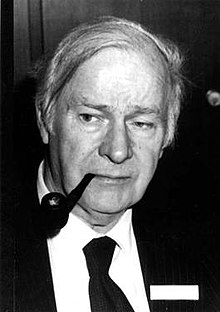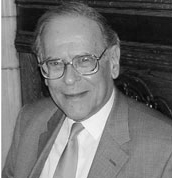
If we were to say Edith Morley to you, your mind might immediately jump to getting lost in a maze of corridors. Just as the mere mention of JJ Thomson, Hopkins and Harry Nursten might trigger memories of wondering around in first year, lost on campus, trying to find the right building.
Few University of Reading students (or staff!) would jump straight to recognising they’re named after notable researchers throughout the University’s history.
From the first female professor, to the pioneer of the zoom lens, to the man who discovered the electron, here’s a handy guide to some of the researchers that campus buildings are named after…
Edith Morley, MBE (1875 – 1964)
Notable points:
- First female professor in an English University
- First female appointed a chair at a British University-level institution
- Her primary subject was English Literature (although she was considered a professor of English Language because, at the time, Language was viewed as a ‘less-prestigious’ course)
- Notable works include The Works of Sir Philip Sydney, The Life and Times of Henry Crabb Robinson and Before and After. Reminiscences of a Working Life
- The University of Reading holds a collection of her papers, including a memoir entitled Looking Before and After, which was published posthumously in 2016
- In 2017, students led a (clearly successful) campaign to rename the Humanities and Social Sciences Building the Edith Morley building.
Morley studied at Kings College London Ladies Department in 1892 but was recommended for transfer to Oxford Honour School of English and English Literature. Although she obtained a 1st class degree, she was not awarded it, on the basis that she was a woman (women were not allowed to matriculate from Oxford during this time, so she was only awarded an ‘equivalent’ degree, instead of the standard Oxford degree men were awarded). She was also limited on her access to the University’s resources.
Upon graduation, she began teaching at King’s College. Morley’s struggles and experiences getting an education contributed to her political ideologies. She was a women’s rights champion, who strongly argued that marriage and motherhood were used to hold women back from professional careers. Her 1914 book, Women Workers in Seven Professions talks of the restricted markets for female academics.
Morley also wrote a number of other books, though mostly around her academic specialty English Literature.
Edith Morley first arrived in Reading in 1905 and became the Head of English Literature and Language at University College Reading (now University of Reading). However, it wasn’t until 1908 that she was appointed as England’s first female professor. Initially, she was the only Head of Department not to be awarded a professorship – for one reason only, her gender. She successfully fought to be named professor and luckily succeeded. This also made her the first woman to be appointed a chair at a British university-level institution.
She was later awarded an Associateship of King’s College. In 1926 she was granted an Oxford honorary MA degree. In 1950 she was awarded an MBE for her work with refugees during the Second World War. The University of Reading hosts an annual Edith Morley Lecture in her celebration.
[/expand]
Harold Hopkins, FRS (1918 – 1994)
 Notable points:
Notable points:
- Moved to Reading in 1967 to become Chair in Optics
- Considered a pioneer in the field of optics
- He developed the mathematical description of the behaviour of optical systems, which were later used in the production of many world-famous inventions
- Produced the now familiar Zoom Lens
- Developed coherent fibre optics, fibroscopes and rod-lens endoscope, making him a pioneer in modern medical instruments
- Awarded Lister Medal in 1990 for his contributions to surgical science
- His son, Kelvin Hopkins officially opened the Hopkins Building in June 2009.
British physicist, Harold Hopkins was born into a low-income family in Leicester in 1918. His teachers and family noted his intelligence early and he obtained one of only two scholarships available in Leicestershire at the time to study at Grammar School. It is said he was good at many subjects, but his Headmaster pointed him towards science.
He graduated with a first-class degree in psychics and maths from the University of Leicester in 1939, where he started a PhD in Nuclear Psychics. However, plans changed as the Second World War broke out and he ended up working for Taylor, Taylor & Hobson, where he was first introduced to optical design. After a brief stint as a soldier in the war, he spent most of the war designing optical systems, which allowed him time to work on his PhD thesis. The end of the war marked the end of his PhD.
He began a research fellowship at Imperial College London two years later, lecturing in optics. Over the twenty years he spent there, he became a master in the field of optics – teaching and supporting PhD students from all over the world.
In 1967 he moved to Reading to become Chair of Optics, Professor of Applied Physical Optics, where he stayed until his eventual retirement. He is known to have declined more senior leaderships positions to favour teaching and research.
His major research work and development include:
- Wave Theory of Aberrations
- Designing the zoom lens – similar to those in use by broadcasters and photographers around the globe today! All the calculations were achieved in a pre-computer age
- After attending a dinner party, wherein a gastroenterologist expressed dissatisfaction with the instruments used for gastroscope procedures, Hopkins designed the first flexible gastroscope, which was presented in 1957
- He then later improved the use of cystoscopes by replacing them with glass rod lenses and added bulb for illumination
- Developed laser compact discs.
Harry Nursten (1927 – 2011)
Notable points:
- Joined Reading University in 1976 as Head of Department for Food Science
- Was a major force in establishing the importance of food science teaching and research in UK universities
- Undertook a PhD in Colour Chemistry, which he was awarded in 1949
- Considered the Father of ‘Flavour Chemistry’ in the UK.
Harry Nursten was born in Czechoslovakia in 1927. During the Second World War, his family made a lucky escape to Yorkshire, England. He graduated from the University of Leeds with a degree in Colour Chemistry and Dyeing, continuing on to achieve a PhD in Colour Chemistry in 1949.
He spent a short time as a research fellow at Leeds, before moving on to teach dyeing and textile chemistry at Nottingham Technical College. In 1955, he once again returned to University of Leeds as a lecturer in the Procter Department of Leather Science. This department grew into a food science department after a decline in interest in the subject of Leather (imagine doing a whole degree on Leather!).
This move drove Nursten to new areas of research, which were stimulated by his sabbaticals in the 1960s at MIT and University of California Davis. In the USA, he developed his interest in Flavour chemistry which would be his major research interest for the rest of his career and also award him his reputation as the Father of ‘Flavour Chemistry’.
In 1976 he took up the position of Chair of Food Science at Reading. At the time, the National College of Food Technology was moving to Whiteknights Campus, to share the new building with Food Science. Nursten oversaw the departments as they merged into the biggest and most successful department of its kind in the UK.
Even after retiring from the University of Reading, his advice on research was sought and given to staff and students. Nursten also played an important role in gaining the Hugh Sinclair Endowment to establish a major new centre for human nutrition research. The IFST now host a symposium in his honour.
His main research included:
- The compounds that provided food with their characteristic tastes and flavours
- Understanding how these compounds are formed
- Becoming a leading authority on Maillard reaction: responsible for the flavour and colour generation in cooked foods. His book is considered the standard text on the subject.
Sir Harry Pitt, FRS (1914 – 2005)
 Notable points:
Notable points:
- Awarded a PhD by Cambridge University in 1938 for research on Tauberian theorems
- Held a long-term interest in probability theory and integration
- Was Vice-Chancellor of the University of Reading from 1964 – 1978
Between 1936 – 1939, Harry Pitt held a Fellowship at Peterhouse, (at which time he spent a year at Harvard). Primarily, he was a mathematician. He was awarded a PhD by Cambridge University in 1938.
Before settling in to teaching roles, Pitt spent some of his early career working for the Air Ministry and Ministry of Aircraft production. In was in 1945 that he was first appointed as a professor of mathematics at Queen’s University of Belfast. He also taught at the University of Nottingham before moving to the USA, to serve as a visiting professor at Yale University between 1962 – 1963.
On his return in 1964, Pitt was appointed Vice-chancellor of the University of Reading. In 1968, a well-publicised incident occurred during a student rebellion, wherein he and the registrar were taken hostage by students and locked in a building on campus. He’d anticipated this and escaped using a set of spare keys!
His main research centred around Tauberian Theorems and he published a number of works including:
- A note on bilinear forms in 1936
- Theorems on Fourier series and powers series in 1937
- On absolutely convergent Fourier-Stieltjes transforms, written jointly with Norbert Wiener.
Sir J.J. Thomson (1856 -1940)
Notable points:
- Nobel Laureate in Physics, credited with discovering and identifying the electron (awarded the Nobel Prize for physics in 1906)
- Credited with finding the first evidence for isotopes of a stable element in 1913
- Six of his research assistants won Nobel Prizes in physics and two won Nobel Prizes in Chemistry. His son also won the 1937 prize for proving the wave-like properties of electrons.
Joseph John (J.J.) Thomson was born in Manchester in 1856. He studied at Owens College in Manchester (now University of Manchester) before entering Trinity College, Cambridge in 1876. In 1884, he was appointed Cavendish Professor of Physics at the University of Cambridge. This appointment was considered a surprise by many as Thomson’s Bachelor and master’s degrees were in mathematics and not physics (plus many believed he was too young…).
His master’s work Treatise on the motion of vortex rings, was prize-winning and showed his early interest in atomic structure. After this, he published a number of papers on both mathematical and physics topics, including experimental issues on electromagnetism. As his research continued into many electromagnetism, particles and energy, he was invited to lecture at many institutes, such as Princeton and Yale Universities in the USA.
In 1897, Thomson was the first to suggest the subatomic particle – now known as the electron, which he discovered this through exploring the properties of cathode rays. In 1912, Thomson and his research assistant F. W. Aston were conduction research and experiments, which led to the first evidence for isotopes of a stable element; which F. W. Aston later continued work on and improved.
Throughout his lifetime and beyond, he won many awards and accolades – including being knighted in 1908 and an honorary doctorate from the University of Reading. He worked on many other theories and developed modern physics (and in some ways chemistry) with his work. Throughout all he relied on his research assistants – many of whom went on to win Nobel Prizes themselves, including his own son.
It’s fair to say, his legacy lived on.


